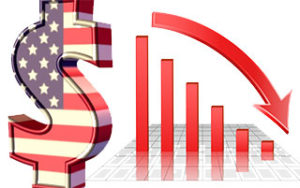In the meantime the Greenback is weakening, and the data to which Yellen points as an indicator to raise the rate shifts. About a week ago Yellen was apparently certain that the US economy was going to grow. Rate hikes were a question of when, as she looked to Brexit and decided to proceed with caution – withhold a raise. Now it seems to be a question of whether the economy will strengthen to a point at which the Fed will feel comfortable to raise rates.
The data that will supposedly indicate if the US economy is on track and can withstand the rate hike, seems to be employment, wages and inflation. Employment data shows less workplaces have been created, yet the unemployment rate is not going up. This suggests that more people have dropped out of the workforce. Given the low levels of inflation and the lack of wage growth, the theory about the workforce shrinking becomes even stronger.
It is unlikely for inflation to pick up if less people are looking for jobs, and instead are earning their living by working independently. Independent workers also generate indirect competition in the labor market, keeping wages down since employers will rather outsource work to contractors if it is possible. This points to a deeper malaise that doesn’t fit the decision making process of the Fed in terms of the data they follow – according to public records.
This means that for now, even a single rate hike of 0.25% is further away than expected, unless the Fed changes the priority of the indicators they follow. If they went from a focus on domestic issues, then to Brexit and now back to domestic figures again, the long game of numbers they play can only become more unpredictable. Adding that to the flip-flopping between the ‘when’ and the ‘whether’, and the only thing investors can expect is more speculation and heightened volatility.





